- Published on
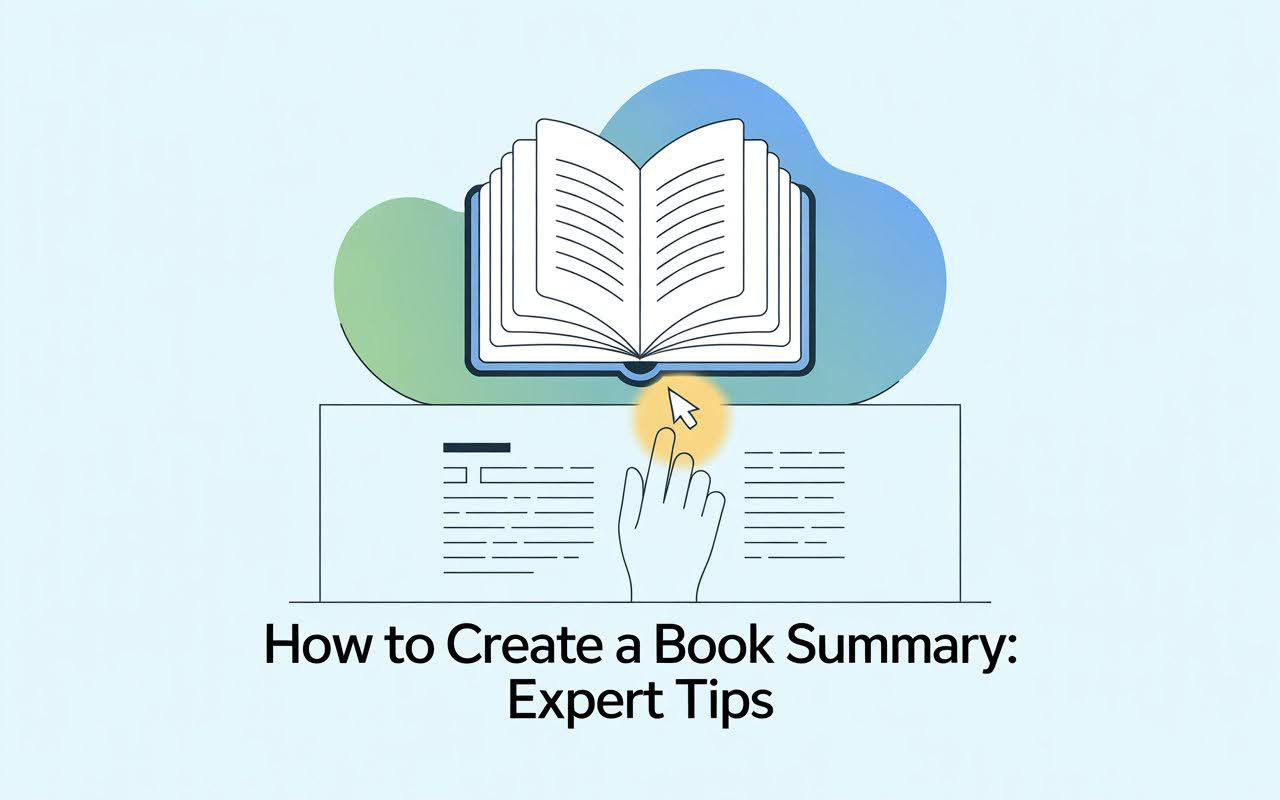
How to Create a Book Summary: Expert Tips
- Authors

- Name
- Bookize Team
As a professional writer, I have summarized a lot of books, blogs, courses, and editorial briefs. To me, summarizing is a craft that is purposeful, selective, and reader-first.
A good summary finds the author’s central idea and captures the supporting structure or evidence. Then it presents these in an order that a reader can skim through in minutes.
In this post, I explain step-by-step how I do it: how I read to find the main idea, organize the result so it's easy to understand, and use tools wisely so they speed up the work. Let's look into it.
What Is a Book Summary?
A book summary is a brief overview of a book. It captures the book's main ideas, themes, key points, and examples, if any. Its purpose is to give the reader a quick idea of what the book is about, so they can decide if the book is worth reading.
There are different kinds of summaries, like plot summaries, thematic summaries, and analytical summaries. Each serves a different purpose. Likewise, the length of the book summary also varies. It may comprise a few sentences or a page or two. This depends on the purpose, level of depth, or type of book.
Expert Tips for Writing a Perfect Summary
These are the core practices I follow whenever I summarize a book. You can use them in order as a step-by-step process.
Read with a Highlighter Mentality
Passive reading leads to weak, forgettable summaries. You should read like you're looking for treasure. Remember the important ideas and quotes in your mind. If it feels difficult, note them down. Also, note any repeated themes or points. This may be the core idea of the author. It will help you in writing the summary later.
Identify the Author’s Core Message
Every book has a main idea that connects its content. First of all, find that idea. It could be in a single sentence, in a paragraph, or distributed over the parts of the book. Let's take the example of a renowned book, “Rich Dad Poor Dad.” The book's opening sentence encapsulates everything. Look:
“I had two fathers, a rich one and a poor one.”
Reading the words “rich” and “poor” gives you the idea that the book talks about the financial mindsets and attitudes towards money. Separate it from other details like examples or stories. Once you get it, the whole summary can be easily designed around it.
Remove Fillers Without Losing Core
Fillers refer to points or examples that do not support the main idea. A filler might be overly long anecdotes, excessive data, or repeated statements. Ask yourself:
Does this part help explain the main idea?
If the answer is no, then it's a filler.
Let’s take “The 7 Habits of Highly Effective People” by Stephen Covey. The second habit he wrote about in the book is “Begin with the end in mind.” Covey gave historical examples along with personal stories and business anecdotes. But in summary, you do not need to discuss them all. You can write like this:
“The second habit, 'Begin with the End in Mind,' tells the readers to define their long-term goals and values early. Then align their daily decisions with those goals.”
See how I condensed the lengthy discussion into concise lines while maintaining the core message. That's the goal. Therefore, when you write a summary, skip the fillers and pay attention only to the parts that help the main idea get across.
Turn Notes into a Coherent Summary
After identifying the core message and pointing out the fillers, it is now time to write the first draft. First, decide on a logical flow for the summary. It could be in chronological order according to the book structure or thematic order (grouping similar ideas).
Then write the summary around the book’s main idea and the key supporting points. Use your own words instead of copying the phrases from the book. Explain the author's concept as simply and clearly as possible.
Refine Your First Draft
Your first draft will often contain extra words that can be removed. When you read it and analyze it for the second time, then clarity will increase. Read it line by line and remove anything that is not necessary.
Then read your summary aloud. This helps you find sentences that are too long or phrases that don't sound right. A summary should be easy to read. And the best way to check its rhythm and clarity is to read it out loud.
If you are having difficulty removing unnecessary words from your draft, AI tools such as text summarizers can help. These tools can analyze the paragraph, remove the extra words, and generate a short summary. I will suggest some good tools later.
But these tools should never replace your creativity. Use them as support where you feel stuck. If you over-rely on them, your draft will look more abstract. There will be no flow, no connectivity. And your writing will feel mechanical instead of like a real human-written summary.
Give It Final Touches
The way your summary looks affects how it’s read. Format it with bolding and proper spacing for easy scanning. Maintain consistency in tense and perspective throughout. Spot and identify any mistakes related to grammar or spelling. End with a single sentence that captures the “essence” of the book.
The essence is something a reader can recall instantly without rereading the entire summary. A clean, polished presentation makes your work more credible and easier to share.
Some Suggested Summarizing Tools for Book Summary Writing
Here are three useful tools, what they do best, and how I use them in my work.
Editpad
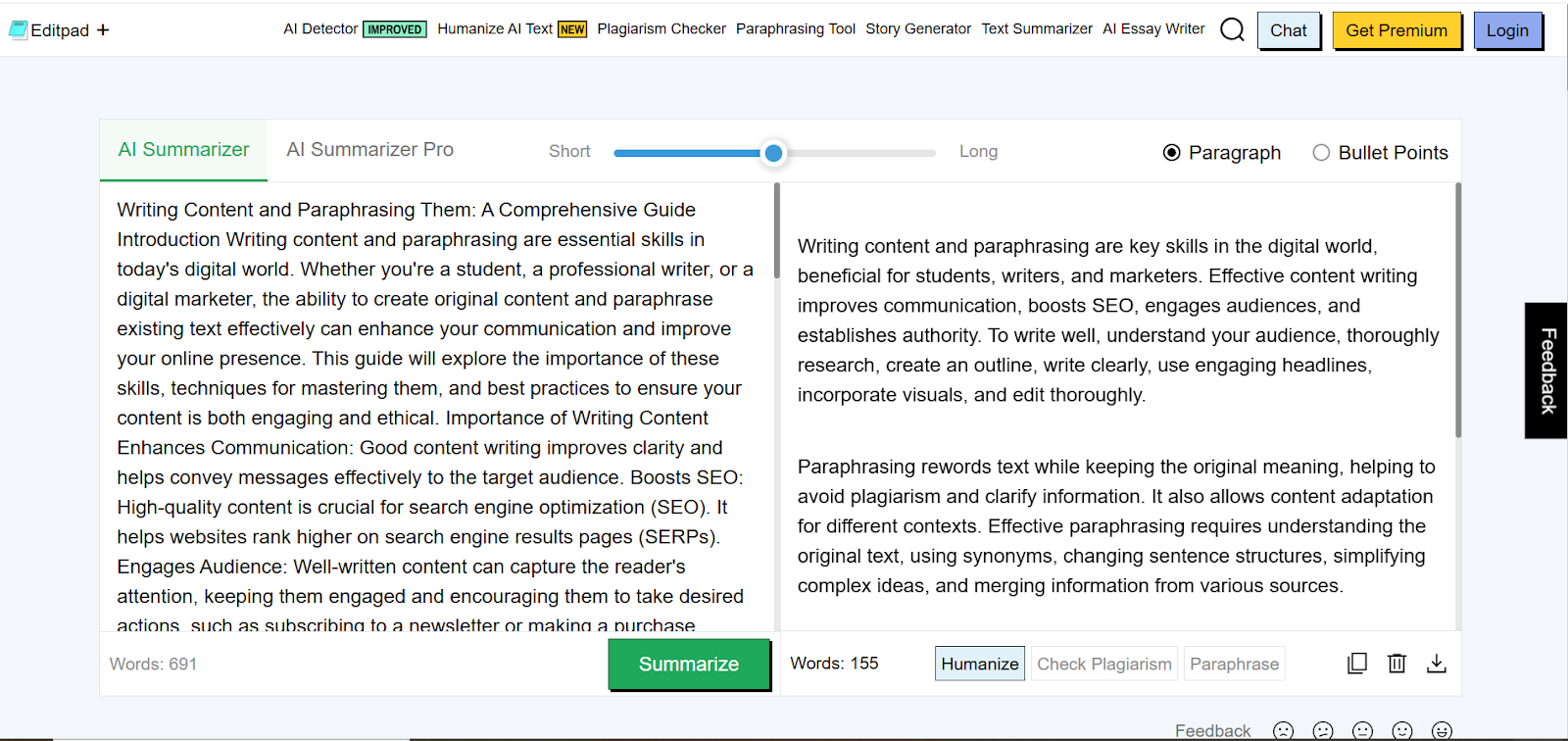
Editpad is a versatile toolkit with many useful tools, and the Text summarizer is one of them. This tool is excellent for quickly turning a long chapter or paragraph into a concise summary. I usually paste in the full summary draft, get a condensed version, and then compare it to my version to see how it summarizes the draft.
Strength: It is fast, easy to use, and ideal for a first pass when you want a quick overview before refining.
Weakness: The pro version of this tool, which is more efficient, is paid. So you have to work with the basic version if you do not pay for it.
Text Summarizer by Parafraseartextos.net
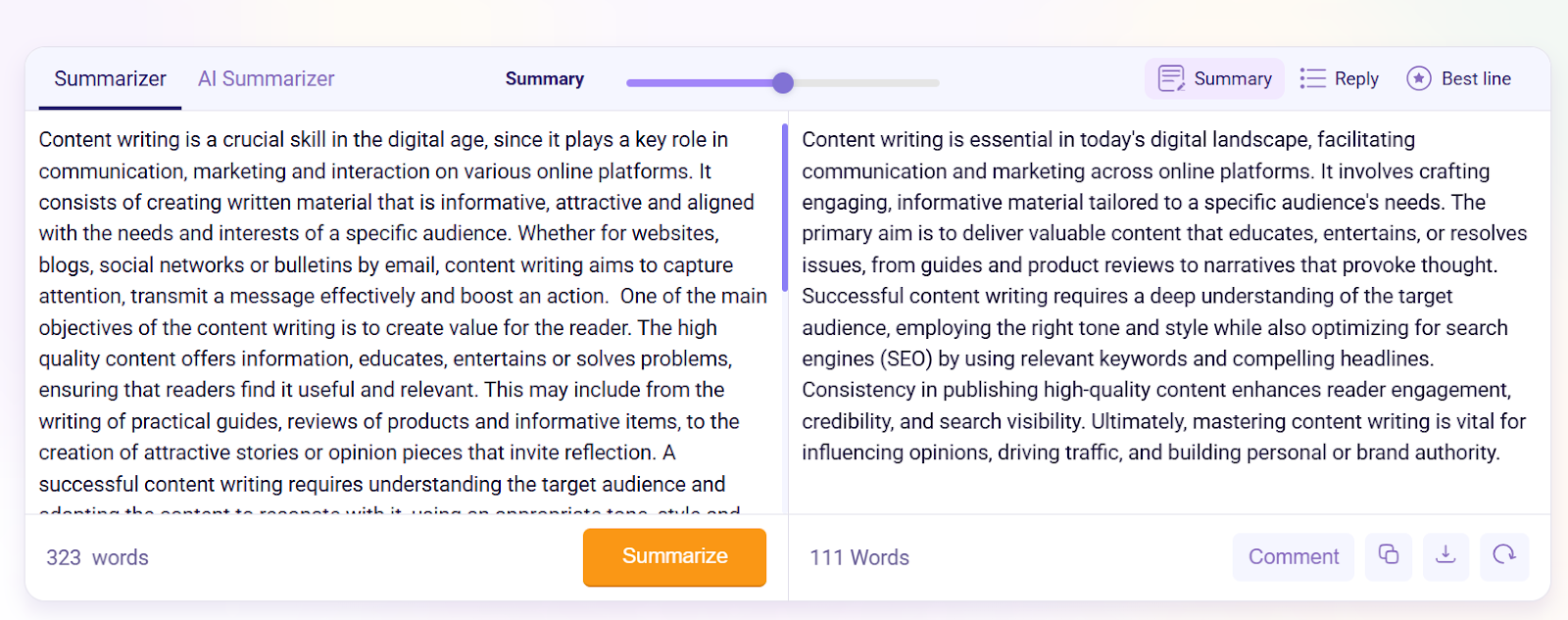
This tool works well when you need different summary lengths for different uses. I might ask for a very short 50-word version of a book summary for social media and a longer 300-word summary for a blog.
Strength: It gives you alternative wording while keeping the main points. This is helpful if you want variety in tone or format.
Weaknesses: This tool is available in three languages: English, Spanish, and Portuguese. So if you need to work with other languages, it won’t be helpful.
Summarizingtool.net
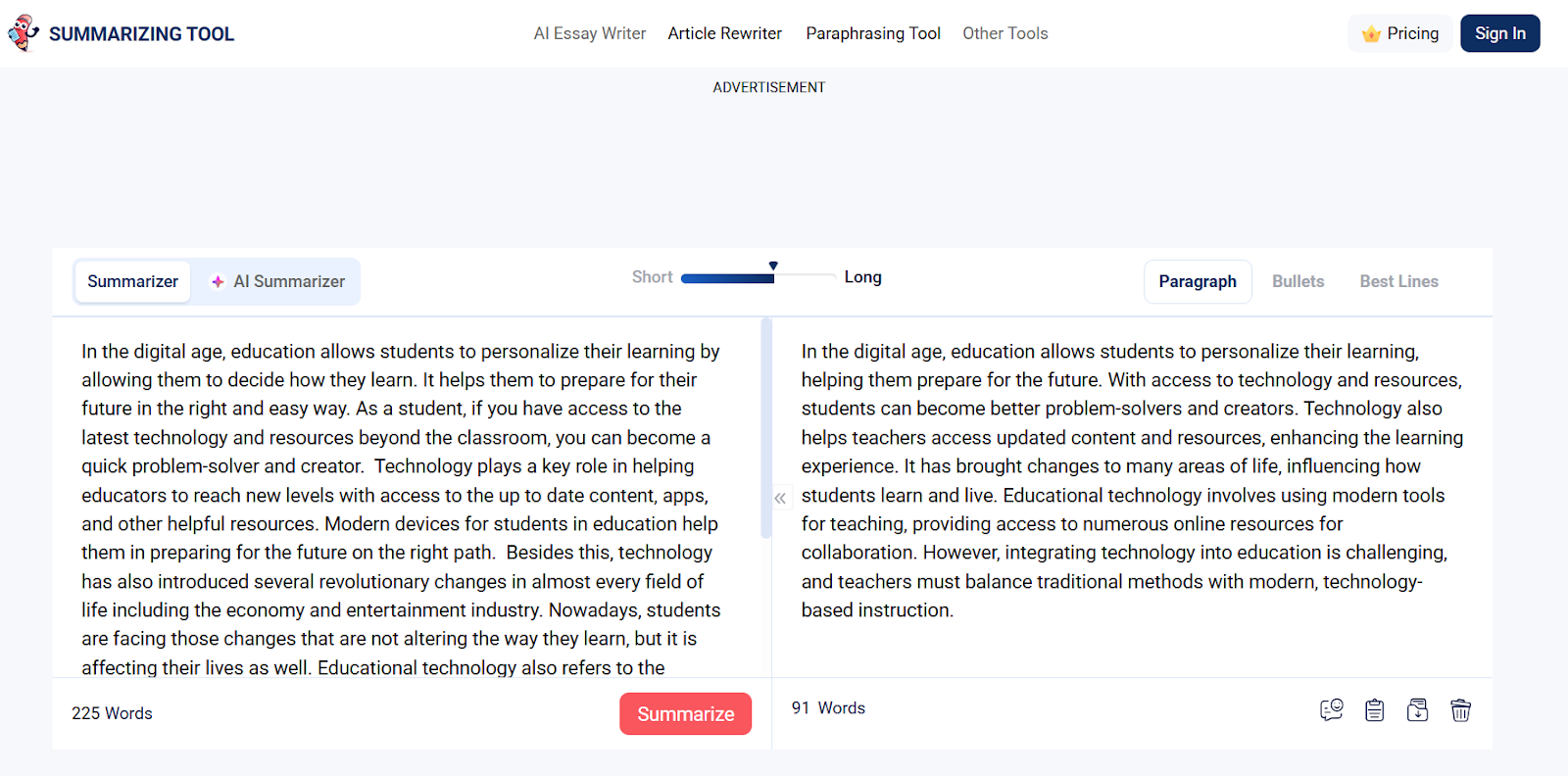
Summarizing tool is helpful when you’re dealing with multiple short sections from different chapters. I often summarize each piece through this tool, then combine the results into a single document. Thereafter, I organize the points based on the main arguments of the book.
- Strength: It saves a lot of time when you have a lot of text to condense quickly.
- Weakness: In the free version you can only process 1000 words at once. So if you need to process more words, you will need the paid plan.
Bookize Summarizer
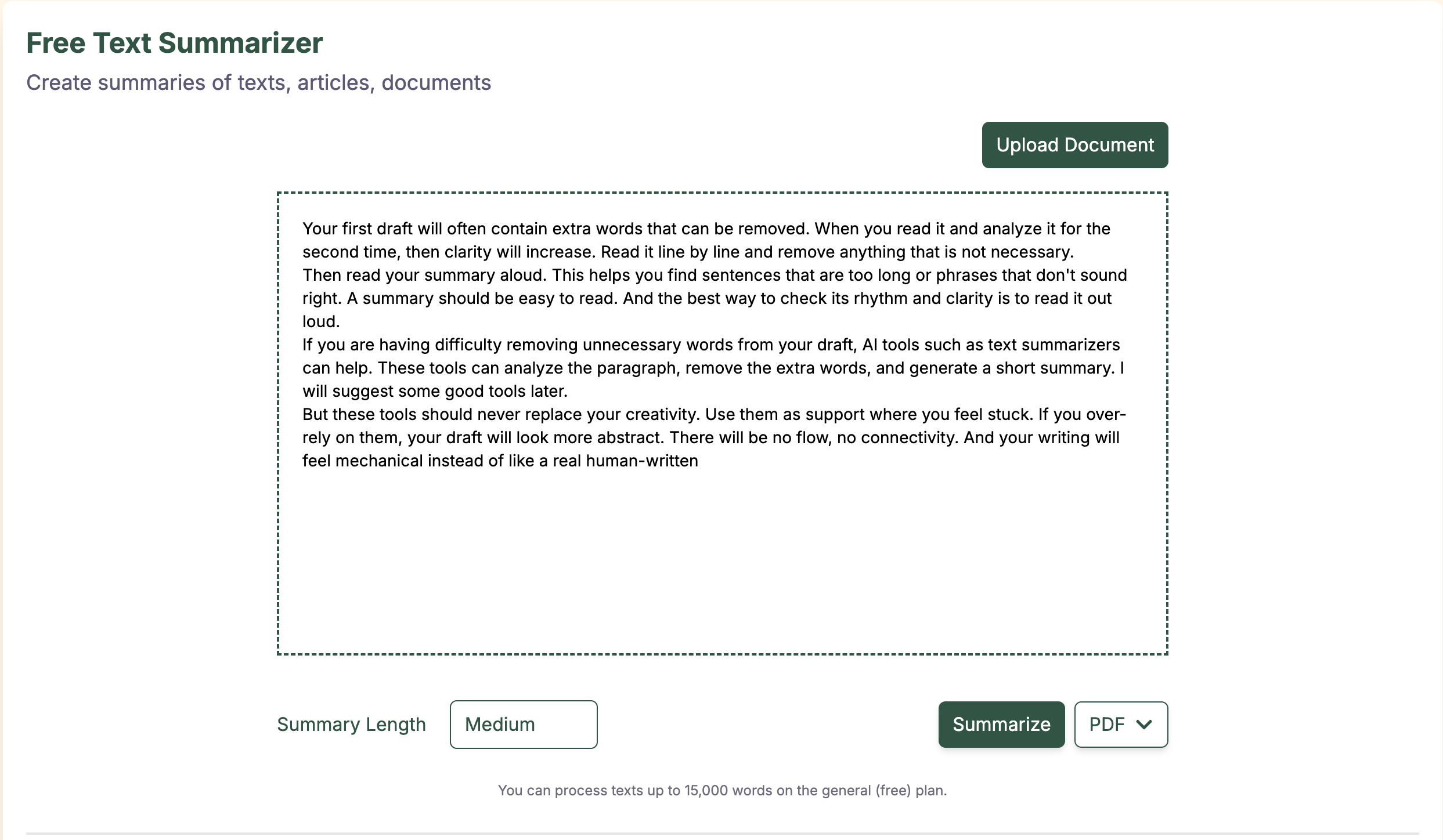
Bookize Summarizer is an AI-powered tool designed to create concise and accurate summaries of books, articles, and documents. It works with popular formats such as PDF, EPUB, MOBI, and DOC, making it versatile for readers, students, and professionals.
Strength: It preserves the main meaning while allowing you to customize the summarization length and supports multiple languages. Files are deleted after processing, ensuring privacy.
Weakness: Free use is limited to 15,000 words per document. For larger projects or advanced features, you need to upgrade to the Premium plan.
Final Words
A good book summary is clear, structured, and accurate. Read the book with a highlighter in mind, extract the main idea, and rewrite it in your own words. Make sure the main theme of the book remains intact.
The tools can help you to some extent. But they cannot replace your creative vision. So use them just as support, not as a solution.
